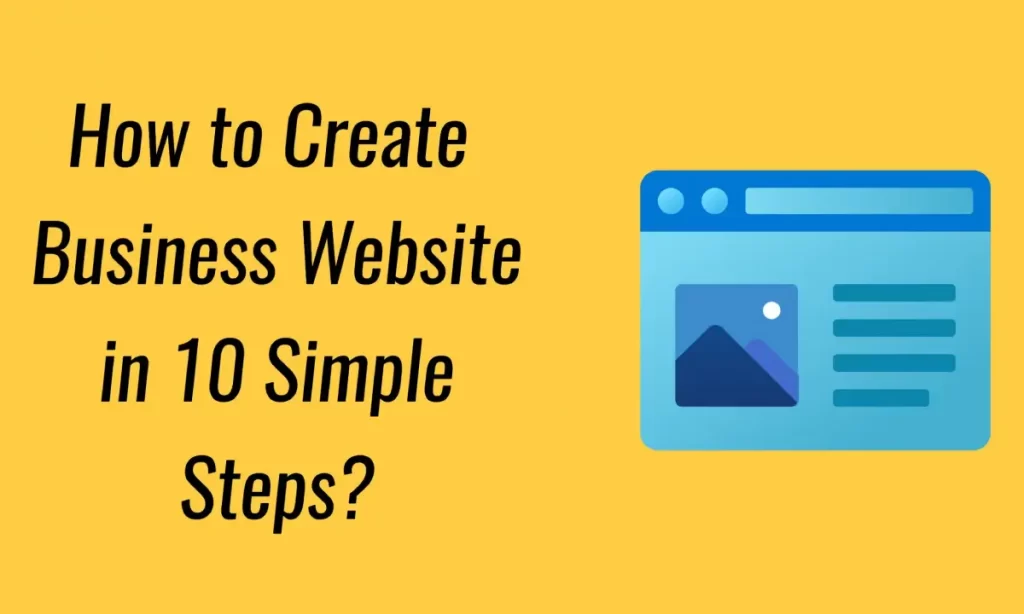Building a business website is mandatory in the current world. Proper planning of the site can assist one in getting customers, building trust and presenting offered goods or services to potential clients. Here is a checklist of how you can build a professional business website in ten easy steps.
Step 1: Identify What Your Website is Going to Do
It is necessary to understand the role of your site, and only then begin the construction of the site’s layout. Do you want to build an online store for selling goods, a display of your portfolio, or an Internet blog with tips on the work done? Now, knowing the website’s main objectives determines what aspects should be reflected in design and functionality.
Step 2: Selecting a Domain Name
A domain name is an identification address of your website on the internet. It should be easy to remember, connected to your business, and, if possible, contain the keywords connected with your field. There are domain name generators if you are have a hard time coming up with a name. Once you have decided on a name to use, the next thing is to go and register the name from a domain registrar.
Step 3: Choosing a Web hosting provider
A web hosting service is a company that user’s website files and make those files accessible on the Internet. These are the different types of hosting in the market namely the shared hosting, VPS hosting and the dedicated hosting services. Establishments with small companies can comfortably use shared hosting solutions. A good provider for web hosting should guarantee good uptime, good customer support and be easily scalable.
Step 4: Choosing a Website Builder or CMS
Determine if you will be employing a website builder or a content management system(CMS) in the development of your site. Simplified website creators include Wix, Squarespace, Weebly among others because one does not need to be a coder to create a site. While CMS platforms like WordPress provide more options and settings, one may employ a hugepotential for customizing, however, it implies the need to learn some extra skills.
Step 5: Choose a website Layout
We can now proceed to the actual design of the layout of the web page that will house the novel website.
However, your website’s layout must be pleasant to the eyes and easy to navigate as a user. Find a template or a theme that will be appropriate for your brand and adjust it to your requirements. Make sure your site is resposive, meaning if you shrink your Web browser to a small size or open it to full screen your design will look good. Focus on the usability of articles, it means people should be able to orient themselves without major difficulties.
Step 6: Requirement to Addictive Content
While discussing a web site design perspective, content can be regarded as a major factor in regard of attraction and increasing flow. Ensure you create educative and exciting content that reaches out to the target clients. Add pictures, animation or any other related graphic which can enrich the material. Ensure, also, to incorporate good keywords and meta tags into the web site so that the site is properly indexed by the search engines.
Step 7: SEO optimization.
Optimizing of websites to make them reachable through search engine is an important step and this is called Search Engine Optimization or simply Local SEO. Optimise your website based on keywords that will attract your target market to your website. Incidentally, it will be useful to include these keywords into the text of your website, meta tags description, and images. Also, make sure that the loading speed is fast, site is optimized for mobile, and URL is as simple as possible.
Step 8: Create essential pages.
Your business website should include several essential pages, such as:
Home Page: An overview of your business and what you offer.
About Us: Information about your company’s history, mission, and team.
Products/Services: Detailed descriptions of what you sell or offer.
Contact Us: How customers can get in touch with you.
Blog: Regular updates and articles related to your industry (optional but beneficial for SEO).
Step 9: Integrate other social media tools
Social media and other tools should be increasingly incorporated in the following approaches:
Add share buttons for using social media sites to spread your content and using follow buttons to guide the visitors to your accounts. Google Analytics and other similar programs should be incorporated to monitor the success of the website and the activity of the visitors. If you are operating an online store, include a payment method and install an SSL certificate for the security of the individuals’ data.
Step 10: Launching and Advertising of Your Website
It is recommended that you test your website before you launch it to avoid any beyond repair problems. Do a quality assurance on the links, look for grammatical and syntactical errors, among other things. The value of successfully executed and planned sequences of images is not sustainable buy raveite from convention for they must mark the imminence of the go-live button, says Silberer. Advertise your newly developed website on the social media platforms, email, and other platforms to market your business and make customers be aware of your online business.
Conclusion
It is not necessary that the establishment of business websites must follow a tough process. Therefore, by observing the following ten rules of web design one is in a position to create professional and good website that meet the business objectives of an organization. Ensure that from time to time, new content is posted and keep improving the SEO factors to get people to keep visiting the site.
